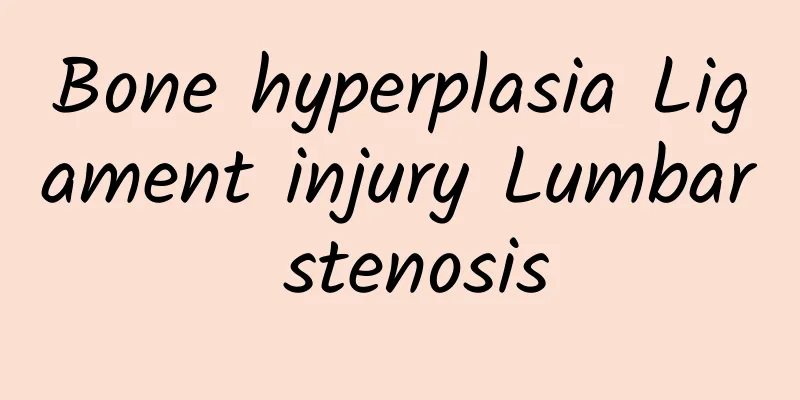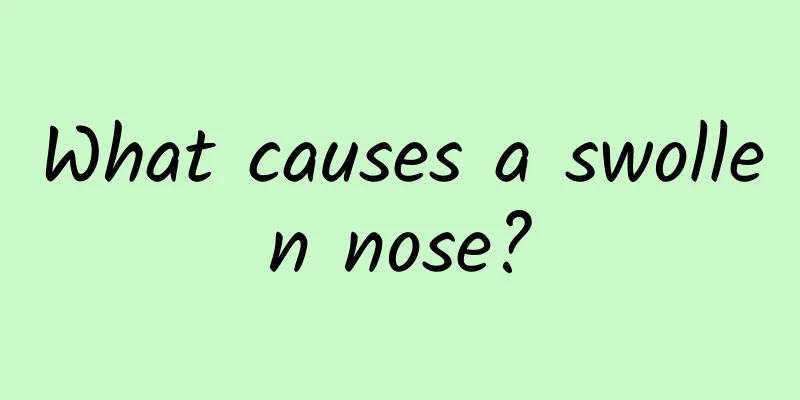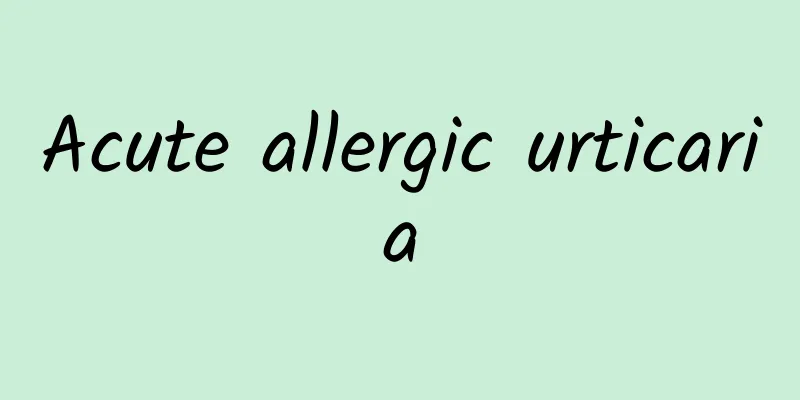Bone hyperplasia Ligament injury Lumbar stenosis

|
Bone hyperplasia and lumbar stenosis are two diseases, but these two diseases are closely related and very harmful. First of all, ligament injury caused by bone hyperplasia can lead to lumbar stenosis. In addition, this secondary lumbar stenosis has many problems and is not necessarily related to bone hyperplasia. It requires understanding and knowledge from multiple aspects to know. Secondary lumbar spinal stenosis is also called acquired lumbar spinal stenosis. 1. Causes Acquired pathogenic factors: degeneration, trauma, instability, deformity, neoplasms, inflammation and other factors. For example: trauma, degeneration, osteitis deformans, spinal tuberculosis, suppurative infection of the spine, tumor, lumbar disc herniation, spondylolisthesis, and iatrogenic lumbar stenosis. 2. Classification 1. Central spinal canal stenosis; 2. Lateral recess stenosis; 3. Nerve root canal stenosis; 4. Mixed stenosis. Pathological changes 1. Bone hyperplasia at the posterior margin of the vertebral body, hypertrophy and ossification of the posterior spinal ligament, herniated intervertebral disc, etc., leading to a decrease in the anterior-posterior diameter of the central canal or narrowing of the lateral recess; 2. Hypertrophy of the articular process leads to stenosis of the lateral recess; 3. Pedicle shortening or cohesion causes sagittal or transverse stenosis of the spinal canal; 5. Narrow intervertebral space, compression of nerve roots in the intervertebral disc and luteal disc, and twisting of nerve roots; 6. Epidural lesions, adhesions, and cysts. IV. Clinical manifestations 1. Symptoms 1. Aged over 40; 2. Central spinal stenosis causes lumbar or buttock pain, rarely radiating pain, and neurogenic intermittent claudication; 3. Lateral recess stenosis and nerve root canal stenosis cause radiating pain, which is continuous pain and can radiate to the legs. 2. Physical signs 1. Rare; 2. In the late stage, there will be a decrease in sensation, movement and reflexes. 5. Diagnosis On X-ray: Anteroposterior: The distance between the pedicles on both sides is less than 18MM, indicating spinal canal stenosis; Lateral view: The distance from the posterior edge of the vertebral lamina to the junction of the vertebral lamina and the spinous process is less than 13MM, indicating spinal canal stenosis. 6. Treatment Depending on the severity of the stenosis, the instability is reduced and the vertebral stability is restored. |
<<: Can I not lift heavy objects after lumbar disc surgery?
>>: There is a soft bag on the lumbar spine
Recommend
Reasons for Red Light Acne Treatment
In recent years, because acne often appears in di...
How to correct crooked legs
If your legs are not straight and look ugly, and ...
Neurasthenia
Because everyone has a different personality, gro...
What is the emergency treatment for acute pulpitis?
Acute pulpitis develops quickly and is very painf...
What to do if your foot is sprained and swollen
As an important organ of the human body, the main...
Why can't I sleep well at night?
There are many reasons why we always have trouble...
Can I drink milk during my period?
During the menstrual period, you must strengthen ...
What to do if there are cracks on the soles of your feet
There are many reasons for cracks on the soles of...
What is a penis fissure?
The penis is the male reproductive organ, which a...
Chinese medicine prescription for bad breath
If a person has bad breath in his mouth, it will ...
Adverse reactions to group a meningococcal vaccine
Group A meningococcal vaccine is actually also ca...
The efficacy of drinking blue cloth soaked in water
Blue cloth is a green plant of the Rosaceae famil...
What to do if you have excessive stomach acid and saliva?
Gastric acid is a relatively common disease in re...
What should I do if my skin becomes dark and yellow?
The quality of a person's complexion is close...
8 months pregnant, swollen left foot, it's a boy
During pregnancy, in addition to enjoying the hap...









